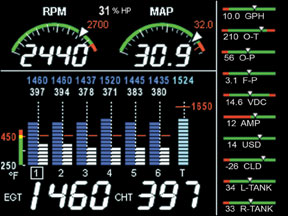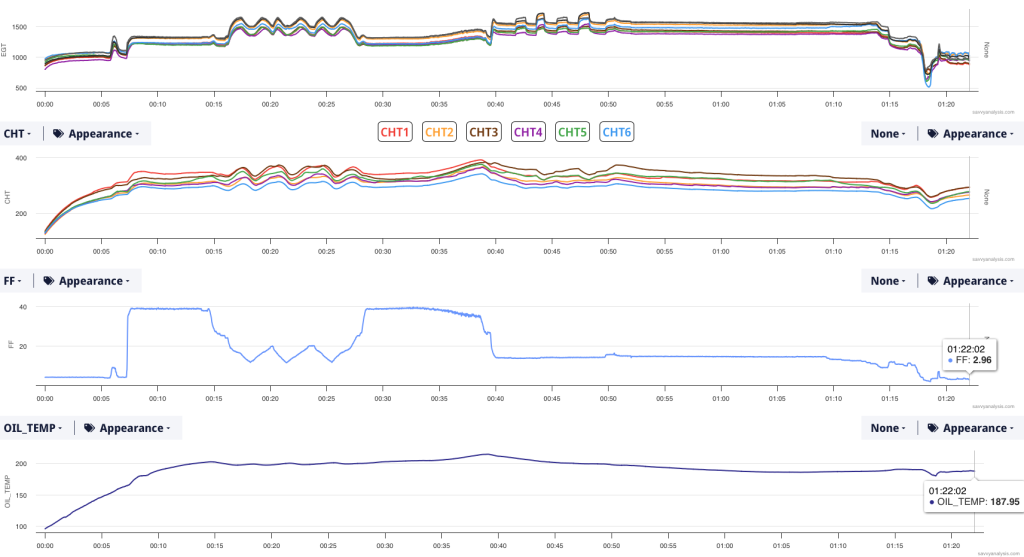
It’s Just Numbers Changing Over Time
I run into aviation people and music people who wonder how a guy who worked in music could wind up in charge of engine data analysis for Savvy. Easy. It’s just numbers changing over time.
If you’re not a musician, you’ve probably heard that music is math. If you are a musician, you’re well aware of it. Notes are numbers – in two ways.
In music theory, each note has a relationship with the notes around it. A simple triad is the root, the third and the fifth. A jazz chord will add the 7th, 9th, the 11th, maybe the 13th, or maybe flat the 5th or sharp (augment) the 5th.
In addition to the math in music theory each note sounds its own unique frequency. The oboe that tunes the orchestra is 440 cycles per second. That note an octave lower is 220 cycles.
If you graph all the parts of an orchestral score onto one page you get something like this —

Put a pin in that and let’s move to a typical general aviation airplane. Airplanes are equipped with engine data monitors that record data. Here’s a JPI 830.

The pilot can see the data in real time and the monitor stores the data – typically sampling every second – and writes it to a file. When the pilot uploads the file we see this —

It’s numbers changing over time – just like that orchestral score.
Sometimes people ask if an engine data monitor is like the black boxes that airliners have. No, the monitors general aviation pilots use focus on engine data. The airliners are tracking hydraulic systems which are in some cases triple redundant, and complicated fuel and electrical systems, and cabin pressures and a whole lot of stuff that we don’t have in small planes.
With small planes, the engine monitors help a pilot recognize a malfunction during a flight, and a pilot who’s good with data can then evaluate the risk. Is it a serious problem that requires an emergency landing? Is it a less serious problem that can be addressed at the next maintenance event? Or is it just bad data because a sensor has failed?
Then when the flight is over, the pilot can upload the data and review it, and look for trends by comparing it to other recent flights from that airplane, and comparing it with data from other planes of that same make and model. I write a monthly column called Puzzler about engine data. The mission of the column is twofold —
to help pilots identify anomalies in real time to make flying safer for the pilot and the passengers
and to help airplane owners be smarter about scheduled and unscheduled maintenance